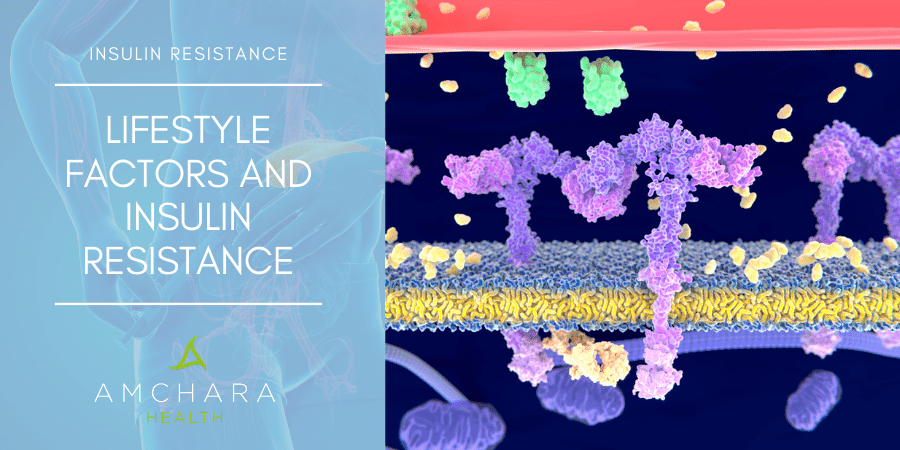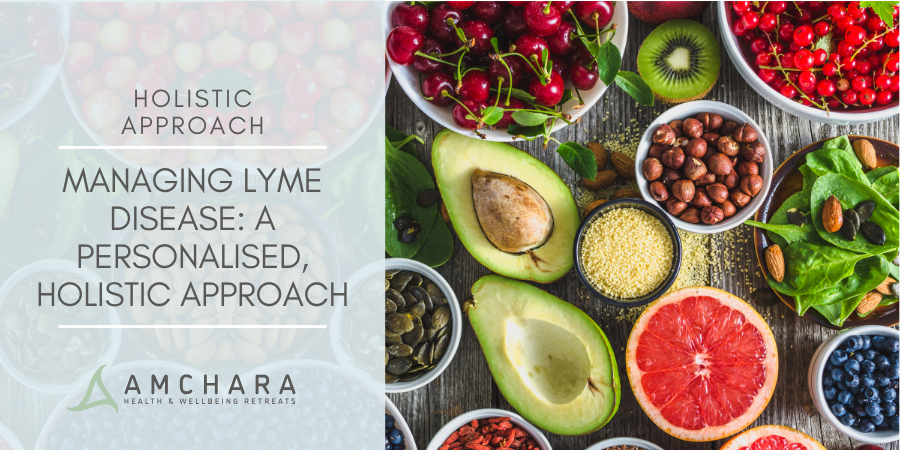Insulin is the hormone responsible for controlling how much sugar is present in your blood. It does this by transferring sugar from your food into your body’s cells to be used for energy. It also tells the liver to store glucose rather than releasing it into the bloodstream.
Insulin helps your body maintain a good steady supply of energy, avoiding spikes in blood glucose levels.
Fluctuations in blood glucose, caused by eating foods high in sugar, drinking alcohol and even by stress and lack of sleep, can result in rushes of insulin being released to try and drive blood sugar down rapidly.
Over time, these blood sugar fluctuations may lead to a reluctance by your body’s cells to react to the message of insulin – as if they no longer listen to what insulin is trying to tell them. This is called insulin resistance.
We always take an evidence-based approach and aim to provide you with actionable knowledge and tips to help you on your journey to optimal health. In this article we’ll look at insulin resistance, how to recognise it, what can cause it and what you can do about it.
Effects of insulin resistance
If your body’s cells don’t listen to insulin’s message, sugar will not be moved into the cells. At the same time, levels of glucose in the blood will be high, which sends a message to the pancreas to produce more and more insulin.
Stable blood sugar levels are important – not only does your brain rely on a steady supply of energy, but too much sugar can damage tissues.
As long as the pancreas can make enough insulin to bring down blood sugar, glucose levels will remain normal. But over time, the pancreas can become tired and no longer able to secrete sufficient insulin. If insulin production falls, the result will be continual high blood sugar.
This is why insulin resistance is an accepted risk factor for Type 2 diabetes. In fact, insulin resistance is often called prediabetes.
Because insulin resistance is usually preceded or accompanied by blood sugar imbalances, recognising the symptoms of unbalanced blood sugar is important. These include tiredness, concentration difficulties, irritability, headaches and sweet cravings.
Once insulin resistance develops, you may not realise you are suffering from it, as it can result in only generalised symptoms such as fatigue, easily attributable to other causes. Over time you may go on to develop symptoms similar to those seen in diabetes, such as excessive thirst, frequent urination, fatigue and vision problems. High blood glucose levels can also contribute to a rise in blood pressure.
Insulin and metabolic syndrome
Insulin resistance predisposes the body to put on weight as fat, because one of the roles of insulin is to promote fat storage.
It’s also associated with metabolic syndrome, characterised by problems managing blood sugar levels, obesity and high blood pressure or cholesterol. Metabolic syndrome is highly correlated with cardiovascular disease.
Insulin resistance is typically present for years before it develops into Type 2 diabetes. Because the body tries to regulate blood sugar level at all costs, by the time it is measurably higher, insulin resistance is established.
Factors contributing to insulin resistance
Insulin resistance is accepted as being a result of lifestyle factors and the following can contribute to its development.
- Sugar and processed foods
It’s important to avoid sugar and processed foods.
Natural whole foods contain nutrients, essential for good health. During food processing some of these nutrients may become damaged or removed to influence the appearance, taste or shelf life of the food. Other substances are often added, such as extra fat and sugar and chemical food additives and preservatives.
Eating sugary and processed foods encourages the body to release chemicals known as cytokines, which can increase inflammation throughout the body and interfere with the effects of insulin.
Alcohol consumption or a high fat intake can lead to fatty liver, closely correlated with insulin resistance.
- Excess weight
If you’re not a healthy weight, resolve to lose some.
Over 60% of people in the UK are now classified as overweight or obese.
Being overweight, especially if you have a tendency to store fat around your abdominal organs, known as visceral fat, is highly likely to lead to insulin resistance. Having a waist measurement in excess of 40 inches for a man or 35 inches for a woman increases your risk. Even some people with a healthy BMI will store fat in these areas.
Visceral fat is thought to manufacture chemical messengers which encourage chronic inflammation in the body. It’s believed certain inflammatory chemicals may alter the way in which cells react to insulin, however research is ongoing in this area.
Losing as little as 10% of your overall weight can increase insulin sensitivity by 38% (1).
Even when insulin resistance has progressed to Type 2 diabetes, losing weight has been shown to return fasting blood sugar levels to normal, and may also improve insulin sensitivity.
- Lack of exercise
Do some exercise, particularly high intensity exercise, which only takes a few minutes.
Exercise brings a myriad of benefits to the body, including balanced glucose levels. When you contract your muscles, their cells are stimulated to take in glucose. Exercise can also reduce chronic inflammation.
Weight loss accompanied by exercise has been seen to improve insulin sensitivity by as much as 80%. High intensity interval training (HIIT) appears to be especially beneficial for improving insulin resistance.
- Poor sleep
Ensure you have at least seven hours sleep per night, preferably more.
Even as little as one night without sleep can significantly affect insulin sensitivity. One study found a night’s missed sleep reduced insulin sensitivity by a third, with a greater effect than eating high fat foods for six months (2), whereas getting only four hours sleep over one night produced a measurable increase in insulin resistance.
- Stress
Learn to manage your response to stress.
Ongoing stress leads to elevated levels of your main stress hormone, cortisol. This can indirectly contribute to insulin resistance by increasing belly fat.
You can’t avoid stress completely, but you can adopt techniques to help manage your response to stress, such as yoga, meditation, deep breathing or acupressure.
- Smoking
Quit smoking once and for all.
Amongst the many dangers to your health, cigarette smoking is associated with insulin resistance and accumulation of fat around the waist (3).
- Caffeine
Watch your caffeine intake.
Caffeine from coffee, tea, chocolate and energy drinks affects how insulin functions in your body. One study found coffee consumption for four weeks decreased insulin sensitivity (4).
It’s thought the effects of caffeine on insulin are due to the short term increase of blood pressure after caffeine consumption, which stimulates the release of stress hormones and can promote inflammation and decrease insulin sensitivity.
Other studies have noted a decreased risk of Type 2 diabetes with regular coffee consumption, so it may be coffee drinkers habituate to caffeine over time.
- Microbiome imbalance
Support your gut bacteria.
The role of the microbiome in insulin resistance appears to be connected to its ability to influence inflammation by the production of chemical messengers and short-chain fatty acids (SCFAs).
If the amount, or variety, of bacteria which live in your gut become imbalanced by poor food choices, stress, lack of sleep or medication, bacterial strains can take over which release pro-inflammatory chemicals.
- Poor thyroid function
Look after your thyroid.
Both an underactive (hypothyroid) or overactive (hyperthyroid) thyroid are linked to impaired insulin sensitivity (5). If your thyroid is struggling, glucose is taken up more slowly by your body cells.
Inflammation and insulin resistance
Many of the above factors affecting insulin resistance have something in common – they encourage inflammation.
In recent years we have begun to understand that high levels of inflammation underlie the development of just about every chronic disease.
Short term inflammation is very helpful in the body. It’s a natural response by the immune system to injury or invasion by a foreign organism, and a normal part of the healing process.
However, when inflammation becomes chronic and involves the whole body, inflammatory chemicals are released; over time these can damage tissues and interfere with natural body processes, such as insulin sensitivity.
As far as insulin is concerned, the pro-inflammatory chemicals appear to directly interfere with the sensitivity of the body cells to the message from insulin, so they don’t react as they should (6).
Testing for insulin resistance
We now know insulin resistance can remain undetected for some time before the pancreas tires and blood sugar levels rise. Therefore, it would not necessarily be obvious from the results of a fasting blood glucose test. Once blood sugar becomes permanently high and is detectable by a fasting blood glucose test, insulin resistance may have been going on for many years.
A more accurate way of testing for insulin resistance is to test fasting insulin levels themselves. Insulin levels will typically be high while glucose levels are frequently normal. Unfortunately, this test is not routinely offered on the NHS.
Takeaway
Efficient blood sugar control is essential for good health. Since insulin resistance is brought about by lifestyle factors, paying attention to these aspects may help to avoid its development. A consultation with a Personalised Health practitioner can help you identify your risk factors and implement small, achievable changes to begin your journey to optimal health.
Please remember these guidelines are general recommendations only and if you are taking medication for diabetes do not alter the dose without consulting your GP.
Did you find this article useful?
We would love to know your thoughts.
Have you begun your journey to balancing your blood sugar?
Let us know your suggestions for reducing insulin resistance.
Read this next:




